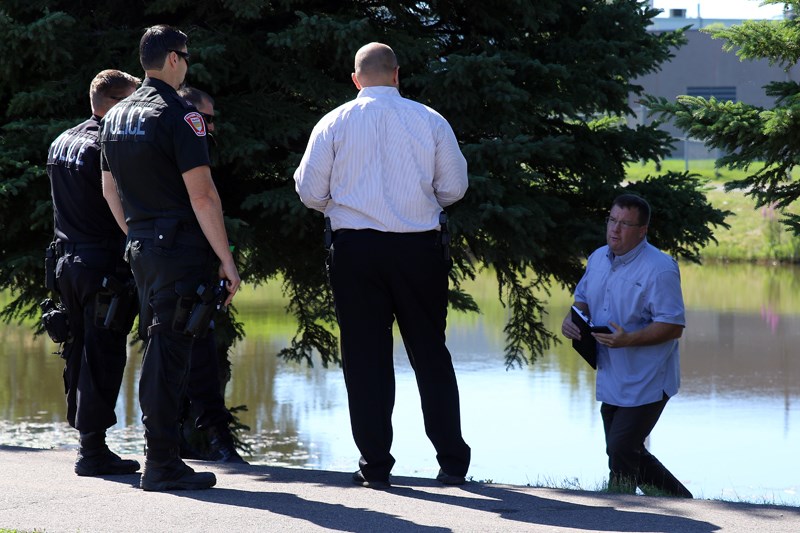THUNDER BAY -- From November 2016 through the end of September of this year, the Thunder Bay Police Service investigated 366 incidents in which people were potentially at risk because of their activities near pathways along local waterways.
Most of the incidents, they say, have involved alcohol as a contributing factor.
"People are intoxicated, unfortunately, to one degree or another. In some cases they don't pose a threat to themselves or anyone else, but in other cases they were in positions where they could easily go into the water," TBPS communications director Chris Adams said in an interview on Monday.
Police have previously reported that on 50 of these occasions, the intervention of officers prevented serious injury or death.
During the November-to-September period, officers encountered a total of 964 people while conducting the "directed waterway patrols" which the police service inaugurated last fall.
The additional data pertaining to incident frequency was made available following a weekend occurrence in which officers entered the Neebing River to rescue two 17-year-old girls who were in the water and yelling for help.
Police later determined that one of the pair had fallen into the river, and the other got into trouble as well when she went to help her friend.
Investigators believe that alcohol consumption contributed to the incident.
Adams said it's not the first time that officers have put their safety at risk to prevent a tragedy in the water.
In an interview with tbnewswatch.com, he was asked if the rate of water-related incidents is getting worse.
"We'll be taking a look at the data over time," Adams said, "but I can tell you that—and this is partially related to this story—we're noticing a big increase this year over last in the number of mental health calls."
He said there's been a 20 per cent year-over-year increase in cases where officers are intervening with people in crisis or who are deliberately harming themselves.
Police make best efforts to conduct waterway patrols several times a day but Adams noted that it can be challenging at times, because officers may be tied up on priority cases at any time during their shifts.
However, without the patrols, he said, "there would have been a number of instances where the death toll or serious injury rate would have gone up even farther."
Adams said police feel strongly that advanced video surveillance at certain points near local rivers would enhance officer patrols because police can't be there 24 hours a day.
He said that would require a significant expansion of Thunder Bay's downtown eye-in-the-sky camera system and its built-in safeguards for privacy and civil rights.
"It's proven itself in the past 10 years to be very viable without being too intrusive."
Adams said it's a question of managing public safety so that "it's not totally Big Brother worrying about everything people are doing. We're worried more about detecting instances where people are at risk or putting themselves at risk, and that's where we'd like to be able to intervene."
